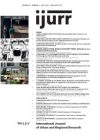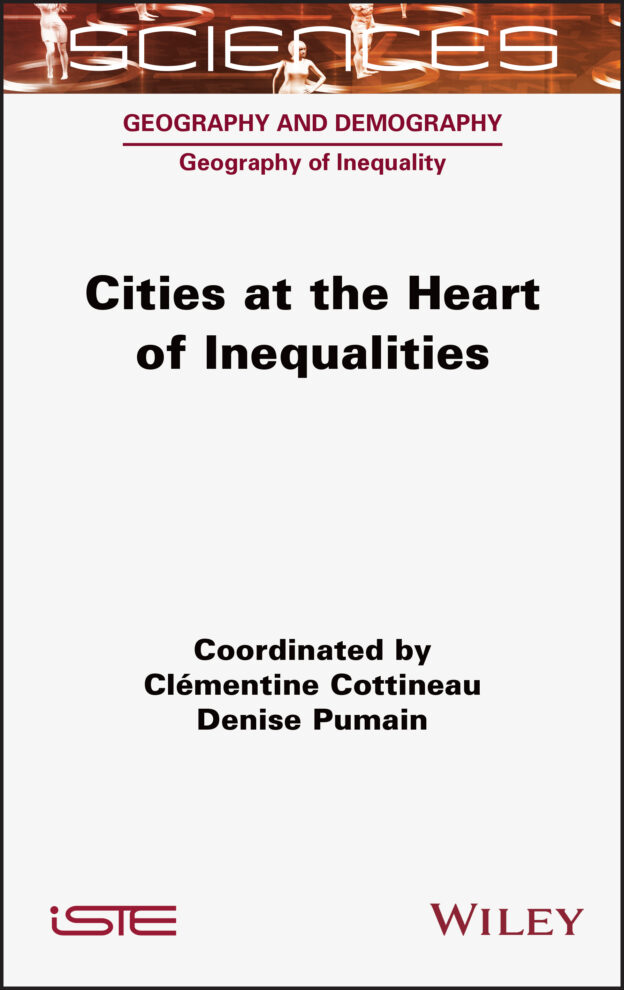Cities, as places where populations and human activity are concentrated, represent structures that lead the world because (among other things) they are the centres of political power and economic activity as well as hubs of research and innovation that lead to development. The desire to achieve these goals makes them highly competitive, and this creates inequalities. Cities at the Heart of Inequalities thus sets out to show—starting with its challenging title—that inequalities are the result of two tensions that mark out the city: ‘the intimate association of the city with the fundamental forces of capitalism’ and ‘the propensity of cities to develop their networks by taking advantage of all the planet’s resources’ (p. ix). These tensions, together with cities’ internal density and diversity, contribute to increasing levels of inequality.
The main aim of Cities at the Heart of Inequalities is ‘to understand how the inequalities that result from these tensions are expressed around the world, within and between cities, what benefits they bring and what problems they pose to their development’ (pp. ix–x). The book’s eight authors are all affiliated to European French-language institutions and it is therefore perhaps unsurprising that this has the feel and style of a French university textbook. At the same time, it makes an academic topic accessible to various audiences, given the fact that the fundamental theory and research are illustrated by specific case studies and examples from every continent.
Cities at the Heart of Inequalities begins with a presentation of several topics that have already been widely discussed in the literature, offering an overview of how inequalities emerge within the city (chapters 1–5) and between cities (chapters 6–7). Despite this apparent lack of originality, discussing inequalities is always important, and the book’s key merit lies exactly in this extensive overview, because it brings together a whole range of issues in one volume. Such an overview is useful in any research and teaching system, and I have chosen to review this book precisely because of its usefulness for teaching urban studies in Romania.
If chapter 1 is useful because of its introductory nature, providing an overview of the major models of how urban societies are spatially organized, the next chapters are helpful for approaching specific issues related to urban inequality. This is particularly relevant to the specificities of the Romanian urban system, coming as a result of the country’s transition from a socialist to a capitalist political, social and economic model: issues to do with land rent, access to urban services, gentrification and socio-spatial segregation, for example. Not least chapter 7, which discusses the inequalities between cities due to their size and status. In the case of Romania, Bucharest is the capital city and the most populous in the country, with approximately two million inhabitants (if the metropolitan area is also included). The next major cities are a long way behind the capital in this regard, having under 300,000 inhabitants (or a little more if the metropolitan area is also included). Consequently, the topics addressed in chapter 7 concerning inequalities related to city size, urban status and urban functions fit very well with the Romanian context.
Each chapter deals with a single topic which is in fact also a whole research area. For example, unequal access to urban services—understood ‘as urban facilities that are linked to the needs of daily life, such as shops, schools, leisure activities and health services’ (p. 79)—which is the subject of chapter 3, is presented in a general manner without focusing on a specific facility but with some emphasis on shopping centres. This approach is beneficial for beginners, as it helps them to understand the whole field in a context where there are already hundreds of articles about access to each urban service considered separately (which could also be broken up into several sub-topics or themes as well). The chapter does not simply present the concepts being discussed and illustrate them in a very rich way, with examples from all over the world; it also investigates potential solutions, as in the sub-section headed Strategies of disadvantaged populations: how can we overcome barriers to accessing services? (p. 95). These aspects hold true for all the chapters in the book, which are briefly presented in the following paragraphs.
After a short preface that introduces the book and defines some relevant terms in relation to the main topic, chapter 1 focuses on models for organizing urban societies, including the centre-periphery model and the concept of the ‘right to the city’. It outlines the historical evolution of the spatiality of markers of social status in cities and looks at the effects of the spatial concentration of deprivation on residents’ health and their children’s education. It then presents historical examples of institutional segregation and separation as an expression of minority identities, discusses the concept of dynamics within the spatial organization of societies (such as residential mobility), and considers various measures and remedies for changing the organizational model of societies and reducing urban inequalities (such as social housing).
Chapter 2 emphasizes the importance of a city’s value, which ‘durably shapes the form of socio-spatial inequalities in urban space, according to a widespread center-periphery model’ (p. 72). This value is now being affected not just by local conditions, such as the significant role played by land and real estate construction, but even more by the multi-scalar determinants of international competition, including the sophisticated and volatile financial products of international finance.
A major issue studied in chapter 3 concerns inequality in terms of access to urban services such as shops, schools, leisure activities and health services. The authors highlight that even in developed countries, low-income neighbourhoods have limited access to services (especially recreational and cultural facilities), noting: ‘The fortification of space seems to have become commonplace in the postmodern city, in the form of multiplexes, malls and gated communities, … protected from violence and danger, whether real or imagined’ (p. 88). Accessing these spaces remains a challenge for everyone—not only people from low-budget households—especially from a transportation perspective.
The next two chapters focus on segregation in the city. Chapter 4 draws attention to the gentrification phenomenon and discusses the rent gap theory by considering the way that real estate contributes to inequality mechanisms through housing-related expenses and the constitution of assets. Chapter 5 then offers a critical synthesis of the issue of inequality and segregation in cities—or ‘geographical oppositions in the distribution of social and ethnic groups’ (p. 137)—by discussing aspects such as the relationship between post-Fordist mutations and their consequences for the social division of space.
The penultimate chapter studies the relationship between migration and urbanization, showing that migrants are more exposed to inequalities than other residents. This is an important issue, considering that ‘one in five international migrants live in just 20 cities’ (p. 173)—something that is particularly visible on the African continent. The book’s final chapter (as already mentioned) deals with a less well-known issue; namely, the inequalities that exist between cities of the same system due to differences in their size, location, social composition and insertion in networks, as well as political or strategic decisions. The editors end with some concluding remarks which remind us that, on the global scale, cities are not only generators of inequalities, but ‘have also contributed to homogenizing in part the very disparate conditions and qualities of life in different parts of the world’ (p. 234). At the same time, they flag up the major inequalities that exist in relation to the resilience of urban populations, as was revealed during the COVID-19 pandemic.
The book contains many relevant figures in colour and greyscale including maps, photos, conceptual figures and graphics. These contribute effectively to the reader’s understanding of the issues presented. For example, figure 1.8 on page 23 highlights through a photo with explanatory boxes the ongoing gentrification taking place in the South London neighbourhood of Peckham Rye, where the two worlds are separated by a simple alley.
The audience for this book is not specifically mentioned, but inequalities concern all of us, whether directly or indirectly. By providing a welcome overview of such a burning issue—the inequality of the urban world in its spatial context—supported by advanced theorizing and practical examples from all over the world, Cities at the Heart of Inequalities makes very interesting reading not only for students, urban scholars and practitioners, but also for those working in related fields such as economics and the social sciences. It could also be useful for policymakers and all those interested in understanding the mechanics of inequalities in our cities and lives today.
Gabriel Camară, Alexandru Ioan Cuza University of Iași, Romania
Clémentine Cottineau and Denise Pumain (eds.) 2022: Cities at the Heart of Inequalities. London and Hoboken, NJ: Wiley. Cover used with permission of Wiley
Views expressed in this section are independent and do not represent the opinion of the editors.

